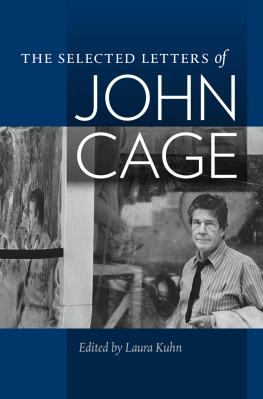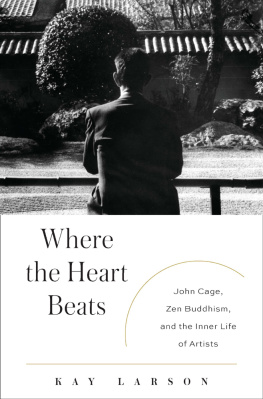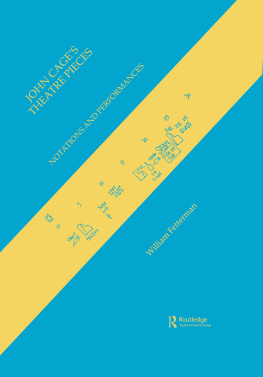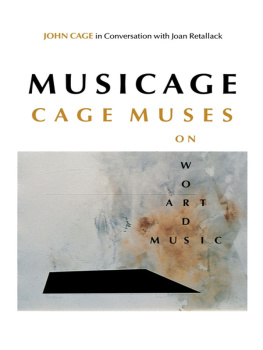ALSO BY KENNETH SILVERMAN
Lightning Man: The Accursed Life of Samuel F. B. Morse
Houdini!!! The Career of Ehrich Weiss
Edgar A. Poe: Mournful and Never-ending Remembrance
The Life and Times of Cotton Mather
A Cultural History of the American Revolution
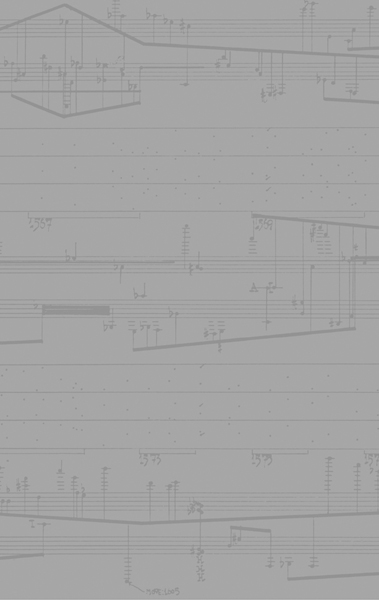
THIS IS A BORZOI BOOK
PUBLISHED BY ALFRED A. KNOPF
Copyright 2010 by Kenneth Silverman
All rights reserved.
Published in the United States by Alfred A. Knopf, a division of Random House, Inc., New York, and in Canada by Random House of Canada Limited, Toronto.
www.aaknopf.com
Knopf, Borzoi Books,
and the colophon are
registered trademarks of Random House, Inc.
Library of Congress
Cataloging-in-Publication Data
Silverman, Kenneth.
Begin again : a biography of John Cage / by Kenneth Silverman.1st ed.
p. cm.
eISBN: 978-0-307-59457-0
1. Cage, John. 2. ComposersUnited StatesBiography. I. Title.
ML410.C24S64 2010
780.92dc22
[B] 2010009525
v3.1
In memory of my friend Stuart Feder
(19302005)
The American is a new man, who acts upon new principles.
J. HECTOR ST. JOHN CRVECOEUR
Letters from an American Farmer (1782)
it is a country of beginnings
RALPH WALDO EMERSON
The Young American (1844)
Beginning was all of living with him, in a beginning he was always as big in his feeling as all the world around him.
GERTRUDE STEIN
The Making of Americans (1925)
I try over and over to begin all over again.
JOHN CAGE
MESSAGEGRAM OF 18 S EPTEMBER 1977
CONTENTS
1. COMES UP FAMOUS
headline, Los Angeles Times
19121937
The Cage Family; Los Angeles High School; Pomona College
JOHN CAGES achievement, the Times observed, was a matter of pride to the people of California. A front-page photo showed Cage waving to ten thousand spectators who had gathered to cheer him, including the mayor of Los Angeles. Telegrams announcing his triumph had been sent to President Woodrow Wilson.
Coming up famous on June 11, 1913, John Milton Cage and his crew of five had stayed underwater more than twenty-four hours, doubling the world record for submergence. The seventy-five-foot-long vesselnamed Peace Keeperhad been built under his patents, as general manager of the Los Angeles Submarine Boat Company. When tested six months earlier, the Peace Keeper sank due to shifting ballast and an open hatchway. It had to be raised off the bottom of Los Angeles Harbor and dragged through mud back to its slip, to be pumped out.
The Times assessed the launching of the Cage submarine as one of the most important events that has ever occurred in California or the entire country. It was believed in Washington that submarines would be key weapons in future wars (such perhaps as World War I, to break out one year later). And Cage had invented novel devices to keep his sub level, increase its speed, and greatly improve its safety by running the engines on gasoline rather than potentially explosive storage batteries. A rear admiral of the U.S. Navy predicted that it would replace all other submarines in use. Not to mention, as John Cage boasted, that his Peace Keeper was the only sub in which the underwater crew could smoke.
About twenty-seven years old at the time, John Milton Cage had been born in Los Angeles, the son of a Methodist minister. His formal education ended with graduation from a high school in Denver. As he later wrote, he remained concerned with radical advances in thinking, with overthrowing traditional patterns we have acquired through years of hard work at school. At a church in Denver he had met his wife, Lucretia, known as Crete. A diminutive, dark-haired woman, a few months older than her husband, she had been married once before, possibly twice. Much concerned with genealogy, she traced his ancestry to pre-Revolutionary Virginia, and her own Iowa family to Daniel Boone. The couple had had a child, whom they named John Milton Cage. But he survived only two weeks. Then on September 5, 1912about nine months before the triumph of Peace KeeperLucretia gave birth in Los Angeles to another son. The couple again named him John Milton Cage, Jr.
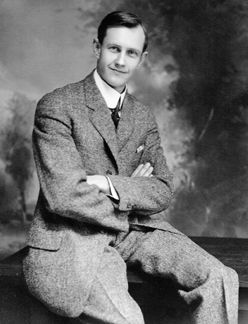
John Cage, Sr.
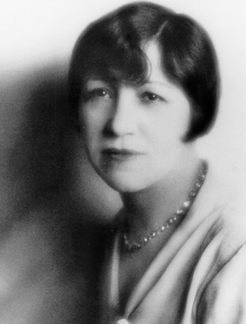
Lucretia Cage
Cage Jr. and his parents moved several times during his childhood and youth. For a while John Sr. took the family to Detroit, where he worked on automobiles and patented some improvements for internal-combustion engines. While in Michigan, Crete sustained her interest in the American past by starting a Lincoln study club. Mostly the family lived in various parts of Southern CaliforniaLong Beach, Santa Monica, Ocean Park.
Young John Cage, Jr., was smart, sensitiveand inventive. At Ocean Park he spent mornings on the beach building roller coasters in the sand, with tunnels and inclines on which he could roll a small rubber ball. He was also pious. When the family moved to a vine-covered bungalow in Eagle Rock, an elevated part of Los Angeles, Lucretias parents lived with them. Cage remembered his grandmother as a very self-righteous woman whose main question in life was are YOU ready for the second coming of the Lord. After dinner, before going to bed, he read Bible verses with her.
Such reading played a part in young Cages early education. He later remembered his time spent in elementary school as dismal. A precocious boy, he got beaten up by other children in his grade, who considered him a sissy. For religious reasons he never defended himself, taking seriously the injunction to turn the other cheek. His musical education began at about the time he reached fifth grade. When living in Santa Monica he took piano lessons from a nearby teacher. When the family moved close to Glendale, they bought him a piano and he studied with his mothers sister, Aunt Phoebe James. A singer, pianist, and piano teacher, she taught him to sight-read. She held recitals at which her students performed Pianologues. Costumed, they played and at the same time read aloud a short story. For a while John Jr. imagined devoting his life to performing the piano works of Grieg, which he found not too difficult, and loved.
In his early teens, during the mid-1920s, Cage Jr. grew seriously interested in radio. He was not alone. His father invented a crystal set that could be plugged into an ordinary electric light system; the 1926 Los Angeles city directory listed him as a radio engineer. The same years also brought the organization of the National Broadcasting Company and the first international radio broadcast, between London and Maine. John Jr. got the idea of hosting a radio program for the Boy Scouts. A Tenderfoot himself, he obtained permission from the organization and the approval of station KNX to broadcast a weekly show Friday afternoons. The performing Scouts spoke about their experiences building fires and tying knots. They also sang, John Jr. sometimes accompanying them on the piano. Now considering himself destined for the ministry, he began each program with an inspirational ten-minute talk by some minister, rabbi, or other notably religious person. During the two years his show stayed on the air, the volume of fan mail increased every month.


